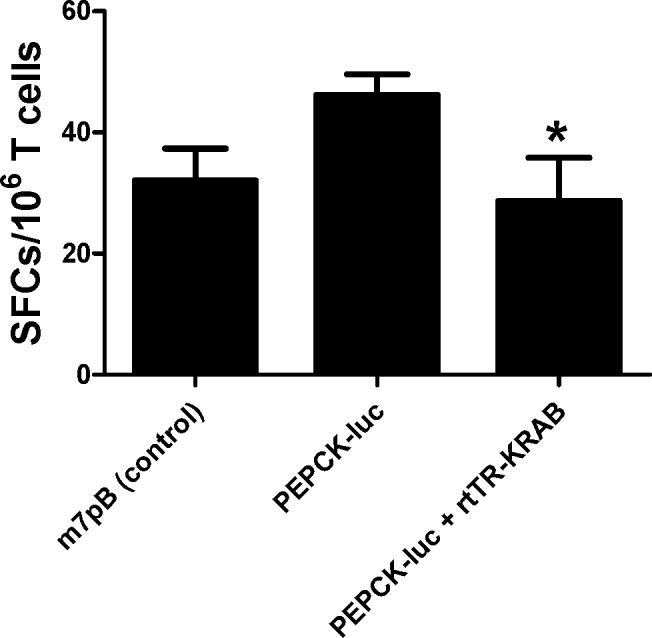Figure 5.

T-cell response to luciferase after hydrodynamic tail vein injection. Luciferase (25 μg) transposon plasmid and transposase plasmid (5 μg) without repressor or with nonintegrating rtTR-KRAB repressor plasmid (100 μg) were delivered by hydrodynamic tail vein injection to wild-type mice pretreated with doxycycline. Control mice received transposase plasmid alone. Spleens were collected from the mice 15 d postinjection, and T cells were isolated for use in ELISPOT. Immune response to luciferase was examined by assaying IFNγ secretion in response to coculture with dendritic cells expressing luciferase. Mice that received rtTR-KRAB plasmid in addition to PEPCK-luc had significantly fewer luciferase-specific T cells than mice that were injected with PEPCK-luc alone, and they did not differ from mice that received sham injections (P=0.026 by ANOVA and Bonferroni's multiple comparison posttest). Five mice per group were injected; 1 × 106 T cells from each mouse were assayed in triplicate. Data are presented as means ± sem. SFCs, spot-forming cells per well, corrected for background of dendritic cells alone.
